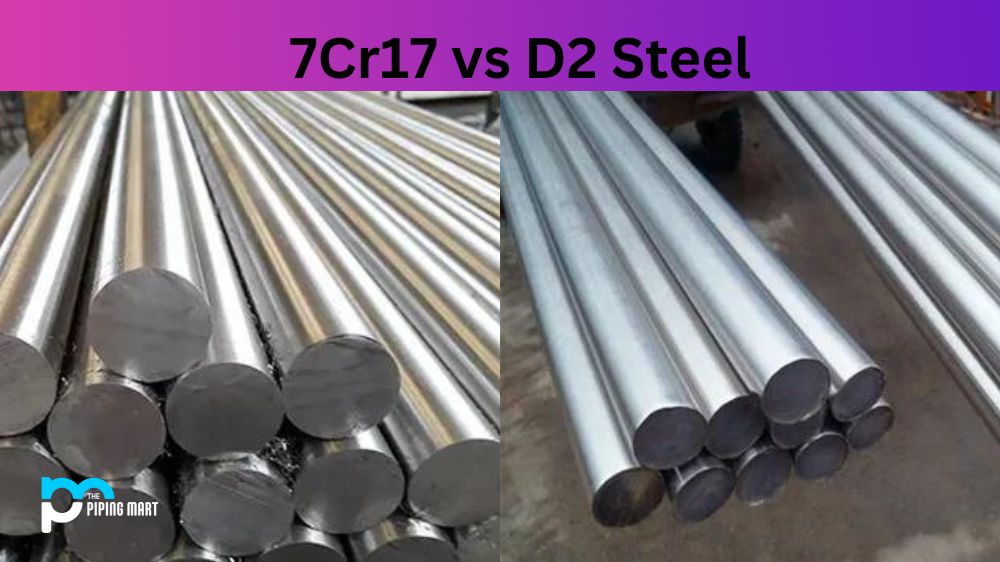Steel is a common material used in making knives, for good reason. It’s durable, holds an edge, and resists corrosion. However, not all steels are created equal. When choosing the right steel for a knife, it’s important to understand the differences between the various types available. In this post, we’ll compare two popular steel types, 7Cr17 and D2, and examine their key differences.
What is 7Cr17 Steel?
7Cr17 is a Chinese stainless steel with high carbon content and adequate chromium, which provides good hardness, corrosion resistance and edge retention. It is commonly used in everyday pocket knives because of its affordability and availability. This steel can achieve an HRC range from 55 to 62 with proper heat treatment.
What is D2 Steel?
D2 steel is a high-carbon, high-chromium air-hardening tool steel known for its impressive abrasion resistance and toughness. It has an exceptionally high wear resistance due to its carbon and chromium content combination. The steel can also offer exceptional strength without being heat-treated too often. These features make it ideal for applications requiring ultrafine cutting tools that must last long under tough conditions.
Difference Between 7Cr17 and D2 Steel
Composition:
The first and most apparent difference between 7Cr17 and D2 steel is their composition. 7Cr17 steel is a low-carbon stainless steel used primarily in entry-level knives. It comprises 0.7% carbon, 17% chromium, and 1% molybdenum. D2, on the other hand, is a high-carbon tool steel containing 1.5% carbon, 12% chromium, 1% molybdenum, and 1% vanadium. Its high amount of carbon makes it an exceptional steel for edge retention. It tends to hold an edge significantly longer than 7Cr17 and other types of steel.
Edge Retention:
Edge retention is critical in determining how long a blade can remain sharp. D2 steel features a high amount of carbon that ensures excellent edge retention. On the other hand, 7Cr17 isn’t known for its edge retention, but it’s comparatively easy to sharpen. It is more suitable for people who don’t need to use knives daily or need a way to sharpen them regularly.
Corrosion Resistance:
All steel can corrode, so choosing stainless steel for a corrosion-resistant knife is essential. 7Cr17 steel is a low carbon stainless steel with excellent corrosion resistance, suitable for blades used in a high humidity environment. In contrast, D2 has moderate corrosion resistance and should be treated as such. It requires regular cleaning, oiling, and storage in a dry place. However, D2 steel is superior because it has a higher chromium content than 7Cr17 steel and is thus more corrosion-resistant.
Price:
You don’t need to break the bank to purchase a high-quality knife today. Knives made from D2 steel are generally more expensive than those made from 7Cr17 steel. This is because D2 steel has higher carbon and steel components, which makes the material more expensive. As a result, knives made from D2 steel are ideal for individuals who can afford to spend on a higher-end knife. 7Cr17 steel, however, is relatively inexpensive, making it the perfect choice for those on a budget.
Conclusion:
Choosing 7Cr17 and D2 steel ultimately depends on your intended use, preferences, and budget. If you’re looking for a steel that lasts longer, holds an edge better and can handle wet environments, D2 steel, hands down, provides a better option than 7Cr17 steel. However, if you’re on a tight budget and don’t need a knife with exceptional edge retention, 7Cr17 steel is a more affordable option. Whatever the case, knowing the difference between the two types of steel arms gives you the knowledge to make an informed decision when purchasing your next knife.
Sakshee is a talented blogger, with a particular focus on the Business and Metal Industry. She is passionate about sharing her insights on various metal products and helping professionals to make a better decisions.




